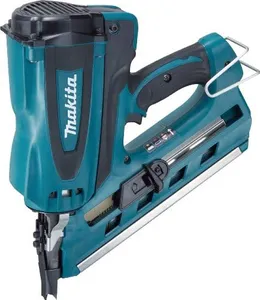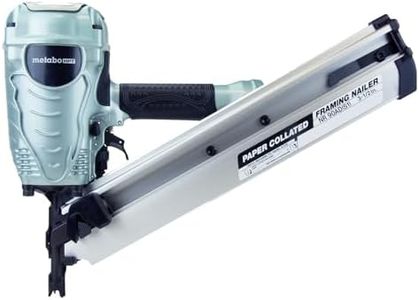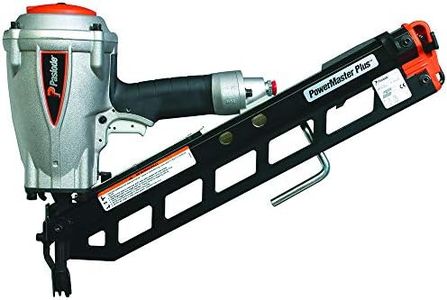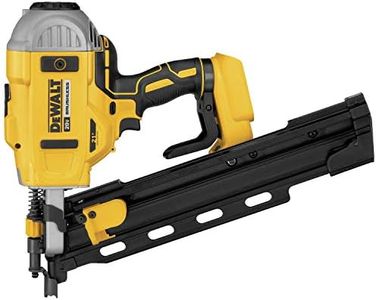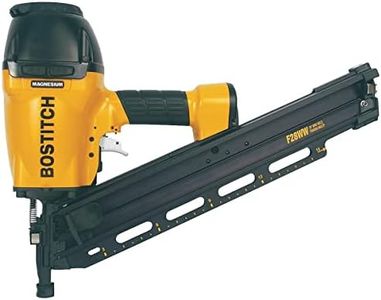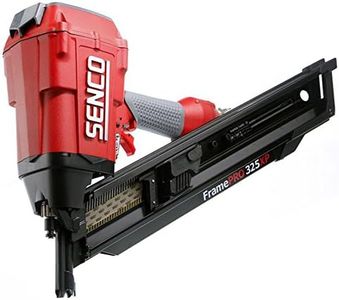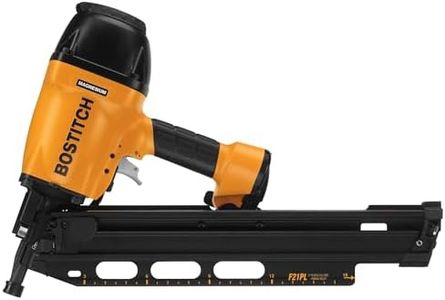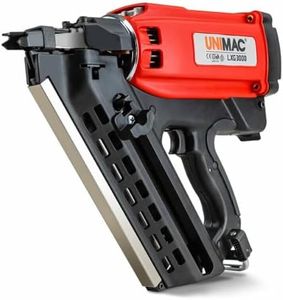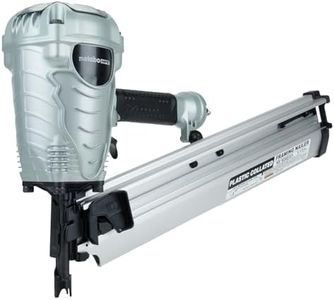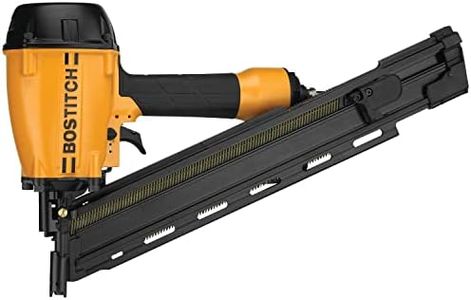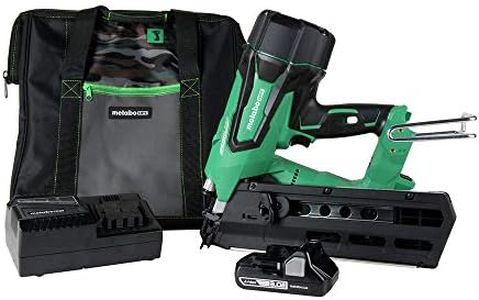We Use CookiesWe use cookies to enhance the security, performance,
functionality and for analytical and promotional activities. By continuing to browse this site you
are agreeing to our privacy policy
10 Best Framing Nail Guns
From leading brands and best sellers available on the web.By clicking on a link to a third party's website, log data is shared with that third party.
Buying Guide for the Best Framing Nail Guns
Choosing the right framing nail gun can make your construction or carpentry projects much smoother and more efficient. Whether you are building a deck, framing a house, or making repairs, the right nail gun will help you work faster and with greater accuracy. The key is to match the features and specifications of the nail gun to the type of jobs you expect to do, the materials you'll be working with, and your comfort and experience level.Power SourceThe power source of a framing nail gun refers to how the tool is powered, typically either by air (pneumatic), battery (cordless), or fuel cell. Pneumatic nail guns are connected to an air compressor and offer consistent power, making them ideal for extended use on larger projects like framing walls. Battery-powered cordless models provide more mobility since there's no cord or hose, making them great for jobsites without easy access to power or for quick repairs. Fuel cell nailers combine a fuel cartridge and battery for portability and power, but they require consumables. Think about where you’ll most often be working: if it’s mainly in a workshop with access to electricity and compressors, pneumatic might be best. If mobility and ease of use are important, look for cordless options.
Nail Type and SizeFraming nail guns use specific types and sizes of nails, such as round head or clipped head, and typically drive nails from 2 inches up to 3-1/2 inches long. The type of nail can affect how secure your connections are: round head nails are often required by building codes for structural framing because they hold better in wood, while clipped head allow for more nails per strip and can make reloading less frequent. Consider what types of projects you’ll be taking on and if local building regulations require a certain nail type or length. Pick a model that can accommodate the nail size you intend to use most.
Magazine CapacityThe magazine capacity tells you how many nails the tool can hold at once. Higher capacity can keep you working with fewer interruptions for reloading, which is particularly helpful on larger projects. However, a larger magazine can make the nail gun heavier and more bulky. Decide if you value longer work sessions with fewer reloads or a lighter, more maneuverable tool for shorter jobs or overhead work.
Weight and ErgonomicsWeight and ergonomics refer to how heavy the nail gun is and how comfortable it feels in your hand. Lighter tools are easier to use for extended periods, especially when working at awkward angles or overhead. Ergonomically designed handles and balance reduce fatigue and enhance control. If you plan on using your nail gun frequently or for long shifts, prioritize comfort, balance, and an easy-to-hold grip. Try holding a few different models before making your choice if possible.
Depth AdjustmentDepth adjustment allows you to control how deep the nail goes into the wood. This is important for working with different materials and thicknesses so that you avoid over-driving (sinking the nail too deep) or under-driving (nail head not flush with the surface). Look for a framing nailer with an easy-to-use, tool-free depth adjustment dial or knob so you can quickly change settings on the go. If you anticipate working with varying wood types or want a cleaner finish, this feature is especially valuable.
Jam Clearing MechanismEven the best nail guns can occasionally jam. A jam clearing mechanism makes it easier to remove stuck nails and get back to work without taking the tool apart. Quick and easy access for clearing jams will save you frustration and downtime. If you’re new to nail guns or expect to use your tool frequently, prioritize a model with a well-designed jam clearing system.
Safety FeaturesSafety features such as trigger locks, anti-dry fire mechanisms, and nose guards minimize the risk of accidental firing and injuries. These are particularly important for beginners or anyone working in busy environments. Evaluate what level of safety you’re comfortable with and look for models that offer the necessary precautions to protect both you and your worksite.
